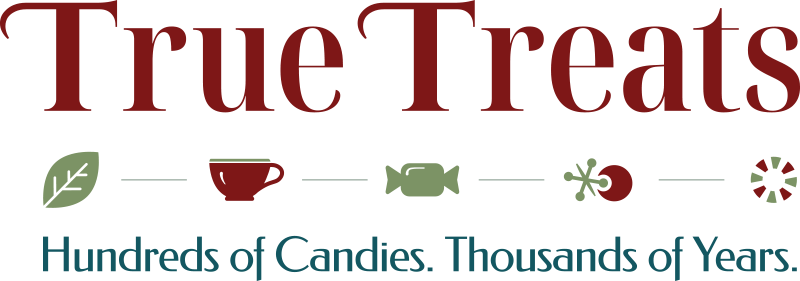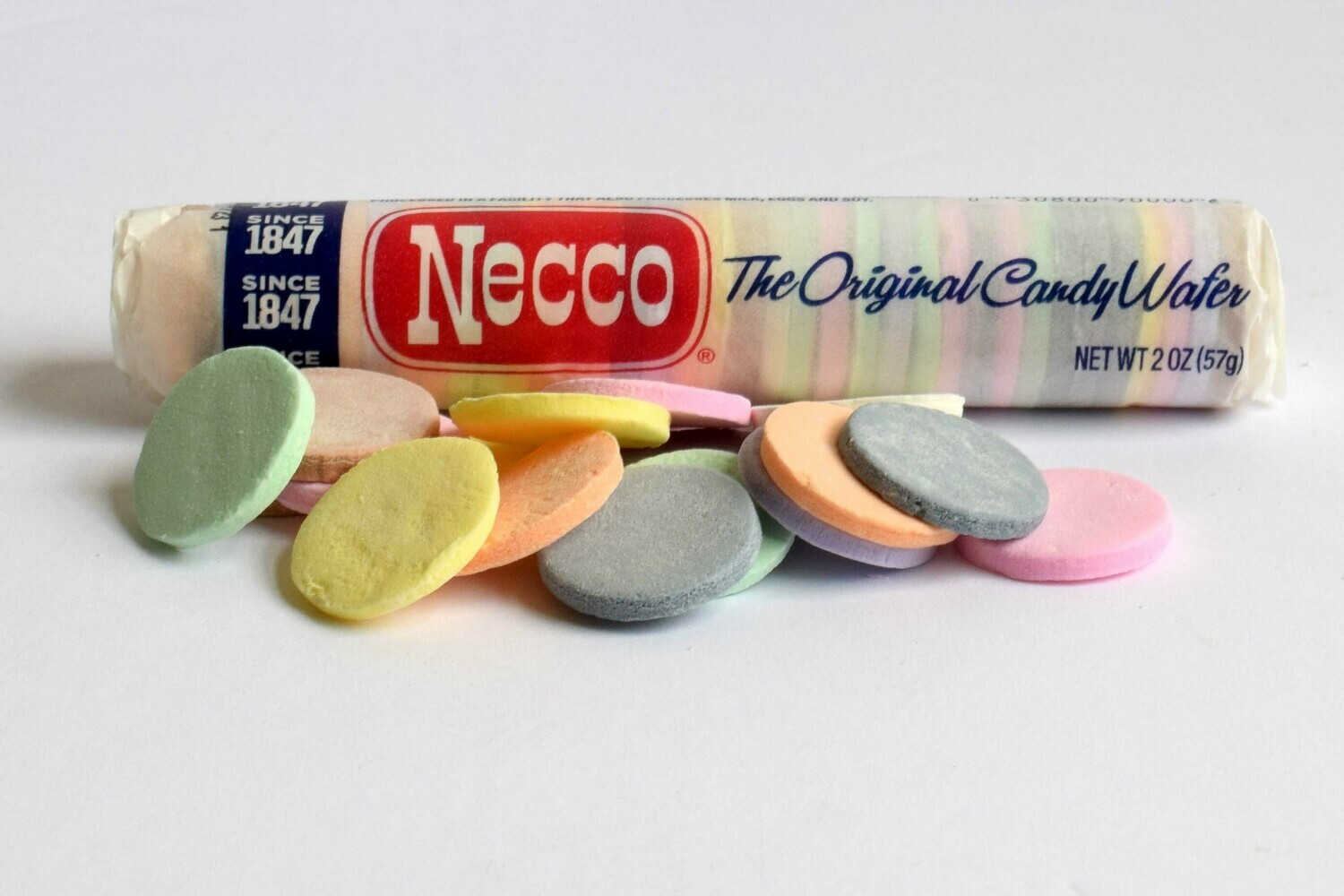You may love Necco Wafers (as I do) or not like them at all…depending on your taste and memory of when you ate them. As for me – I once lived near the Necco factory in Cambridge Massachusetts and would knock on a side door of the building on an occasional Thursday. That was the day when the company store was open to workers, and a woman, maybe a manager, would open the door and give me some samples. I always offered to pay, and she always brushed me away. But why the side door? Why not go to my local pharmacy, candy store, or so many other spots and buy some there? BECAUSE: Tropical! My favorite Necco Wafers were the hard-to-find tropical varieties and the factory had rolls a’plenty. Not that the other flavors weren’t good enough. For me, they too were good enough and then some.
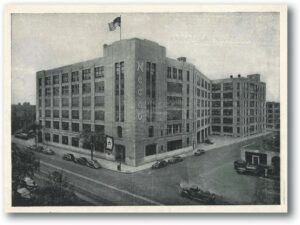
Necco Company in Cambridge, Massachusetts (Courtesy: BOSTON.com)
Love them or not, one thing is TRUE: Necco Wafers were an early candy, a true first footprint on the path to Retro candy and the story is amazing…starting with OLIVER CHASE!
Who Invented the NECCO Wafer?
Today’s retro candy was invented, more or less, in apothecaries where sugar reigned as a flavoring and curative. Some were actual pharmacies – some, shall we say, were sketchy. So, it makes sense that Oliver Chase, a genuine pharmacist, would be among the first to create what would be an early retro candy. Chase had immigrated from England in the 1840s and set up an apothecary in Boston with his brothers Silas and Daniel. One of his products was “soft paste,” lozenges consisting of sugar, gum Arabic, a flavoring and possibly gelatin.
As a medicine, Chase, like other pharmacists, mixed in numerous arcane and familiar ingredients: peppermint or ginger for stomach problems, rhubarb for constipation, ginger for nausea, and opium for just about everything else. As a candy, Chase replaced the bad tasting ingredients with tasty flavorings that would appeal to grown-ups and kids alike. The ingredients are pretty much the same as stick candy or Turkish delight, but the texture was both smooth and chalky. Customers report they used NECCOs as a practice communion wafer and their grandmothers used them as a sugary sedative to keep the grandchildren quiet at church.
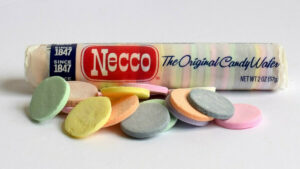
NECCO Wafer: Problem/Solution
Chase’s lozenges were exceptionally popular, which created a problem. The production process was so slow, he got further and further behind the orders. Besides, making the lozenges was tedious, exact work: according to Scientific American of 1868, the “plastic” sugar was rolled into a sheet then cut, lozenge after lozenge, like crackers from dough. The batter was temperamental, it had to be just the right consistency, measured and pressed to make close-to-exact doses, with as little handling as possible.”
So, in 1847, Oliver Chase developed a lozenge cutting machine where he cranked dough onto plates with lozenge-size indentations. The lozenges tumbled out in uniform sizes as quickly as his hand could turn.
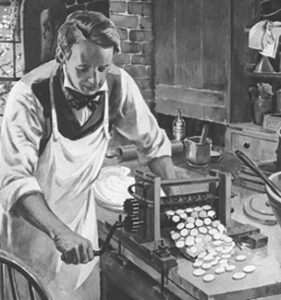
Chase called the result the “Chase Lozenge” or “Hub wafer” – one with a glazed and the other with a transparent wrapper. “Hub”, by the way, was a nickname for “Boston”. Later, the confection was called the Necco Wafer. For the first time, candy-makers could quickly produce consistent pieces and medicine-makers create predictable doses. Chase’s machine was revolutionary.
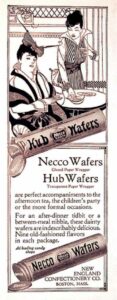
What Other Candies Were People Eating When Chase Created the NECCO Wafer?
Grown-ups and kids were eating other candies, but few survive today. One was Turkish delight also called Turkish “paste,” which actually resemble fruit squares and an invention from around 1805 – the Gum Drop. Others include the Gibralter, made in the nation’s first commercial candy company in 1806; pulled creams, which evolved in the mid-1800s; hand-pulled sticks which go back who-knows-how long…probably 1600s; and sugar plums, a broad range of candies with a tiny nuts or seeds surrounded with sugar such as Cream Filberts (late 1700s) and sugared or Jordan Almonds (ancient Romans).
What distinguished Chase was his use of machinery to make the candy, so it was every-ready to enjoy.
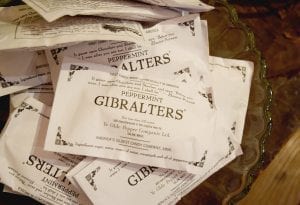
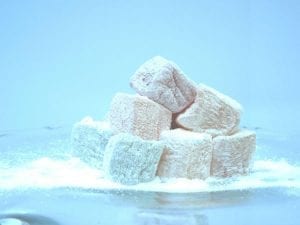
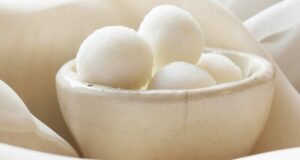
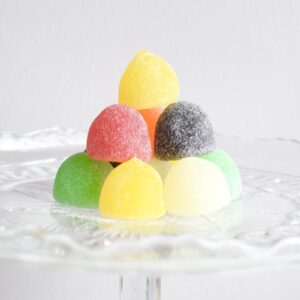
Turkish delight Cream Filberts Gum Drops
Romance and the NECCO Wafer
Oliver soon partnered with his brother Silas to make a sugar pulverizing machine that, according to their patent application of 1850 “…consists of a cylindrical vessel or mortar made of caste iron or other suitable material and of such thickness and dimensions as circumstances may require.”
Almost twenty years later, another Chase-inspired change was on the way, this one by Daniel Chase. During the 19th century “conversation lozenges” were popular in England, where little sayings were hand-printed on the candy. Some were romantic, such as “Love me” while others inspired precisely the opposite. The temperance movement was behind many of those, with such sobering comments as: “Drink is the Ruin of Man,” and “Sobriety is the way to riches.” In the U.S., Daniel invented a “motto-making” machine that printed sayings quickly and directly on heart-shaped candies, focused entirely on matters of the heart, not the liver. The result is called “Sweethearts.”
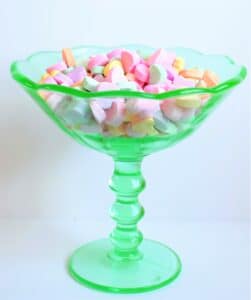
As the candy industry grew, the confectioner’s role seemed to have taken on greater stature. In 1912, the Americana, an encyclopedia, says:
“Of course, we know that in the early days, the art of manufacturing confectionery was confined almost exclusively to the apothecaries and physicians, both of whom made use of these sweets in their attempts to disguise the unpleasant characteristic of their medicines…During the 19th century the confectionery trade has experienced its greatest development for it is since the dawn of that century that it has become what it is to-day, one of the world’s great business enterprises. In the making of this transition, the druggist has not ceased to be a factor in the trade. He still requires his medicated candies but, in this respect, he has become a purchaser…”
The Americana also noted that:
“…candy usually was confined to such ordinary products as the old fashion stick candy, sugar plums, and the ordinary molasses candy…In 1846, Oliver R. Chase, who with his brother, formed the firm Chase & Company, invented a machine for the making of lozenges…In 1866, a further innovation in lozenge innovation was produced by Daniel G. Chase. This was a machine for printing on candies and it was to those invention that the well-remembered conversation lozenges owe its existence… Since that day, the history of the confectionary trade has been a constant record of development.”
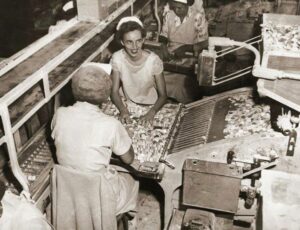
Packing Necco Wafers Mid-1900s
The Necco Wafer Goes to War (Or does it?)
The Chases may have ushered in the industrialization of candy, but there’s more. It’s possible, and I underscore possible, that the Chase Brothers sent Oliver’s lozenge to the Union soldiers. This distinction is relevant because many in-the-know people such as reenactors, historic Web sites, and NPR’s quiz show Wait, Wait Don’t Tell Me indicate this exchange of sweets definitely happened. I called the New England Confectionary Company for confirmation after I failed to find original sourcing. A young, chipper-sounding employee from their outsourced PR department merrily informed me that the Necco was not in the war. Silly, silly NPR.
Here’s my opinion. Seeing how friends, family, and businesses sent candy to Civil War soldiers during the war, why wouldn’t Oliver Chase and his popular lozenge be among them? So, did they send or didn’t they? My vote is yes. Either way, Admiral Byrd definitely did take 2 ½ tons of the lozenges on his expedition to the South Pole and during World War Two, when Hershey was busy with the D – Ration, the U.S. sent Neccos to troops because they were “practically indestructible”
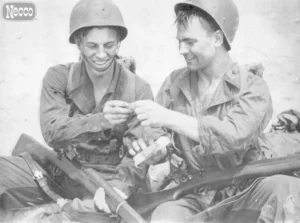
Necco Wafer Eaten by Soldiers in WWII
The NECCO Candy Company – Moving On and Up
Over the years, the company underwent many changes. After building a factory on Melcher Street in Boston, the Chase brothers opened a “Western” branch in Chicago. It was destroyed in the Great Chicago Fire of 1871. In 1872, the Boston factory burned down as well. The company rebounded, and in 1901, joined the other companies to rise up as the New England Confectionery Company. All went well as the company opened a factory in South Boston, then one in Cambridge, Massachusetts in 1927 and where I went to buy candy decades later.
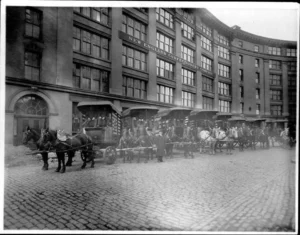
NECCO- Boston Early 1900s
 NECCO- Boston Early 1900s
NECCO- Boston Early 1900s

Necco Chimney in Cambridge Massachusetts
Necco Wafers, Sweethearts, Clark Bars, Mary Janes, Slapstick & Squirrel Nut Zippers
But, as fate would have it – and does with so many companies – it changed hands in the corporate style of hand-changing…too many names to bother mentioning. At one point, in a move to stay afloat in the ever-changing world of vintage candy, NECCO bought out other candies. Their mission was simple: Be the provider of retro, old time, and vintage candy–WHATEVER you want to call it! Their selections went onto include Squirrel Nut Zippers, Clark Bars, Mary Janes, Candy Buttons, Banana Chews, Canada Mints, Necco Wafers, Slapstick, Sweethearts and Sky Bar…among others.
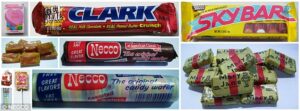
Image: UK Daily News
In a story sad for all of us – the NECCO factory moved out of Kendall Square in Cambridge where it had a time-honored home. The building became the high budget, albeit soulless, property of MIT. NECCO resituated in Revere Massachusetts….just down the road… then…went bust.
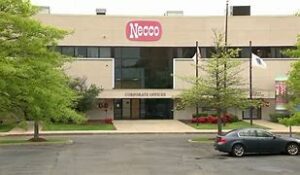 NECCO Last Stop in Masschusetts, Revere
NECCO Last Stop in Masschusetts, Revere
The End that Isn’t (Fortunately)
While the NECCO company went under, not all the NECCO candies went with it. The Necco Wafer is now being made by Spangler, itself a venerable company with an impressively long history starting in 1906. A related Candy Button is available, and the Clark Bar (made by Davied Clark, maker of Teaberry Gum) is now made by the Boyer Company maker of Mallo Cup and comes in two shapes – cup and traditional bar. Our version of Canada Mints really is made in Canada where they were invented (no surprise!) and Mary Janes seem to be sliding on and off the retail radar since last year. We love them all – for their memories and their tastes.
THANK YOU, OLIVER CHASE!
